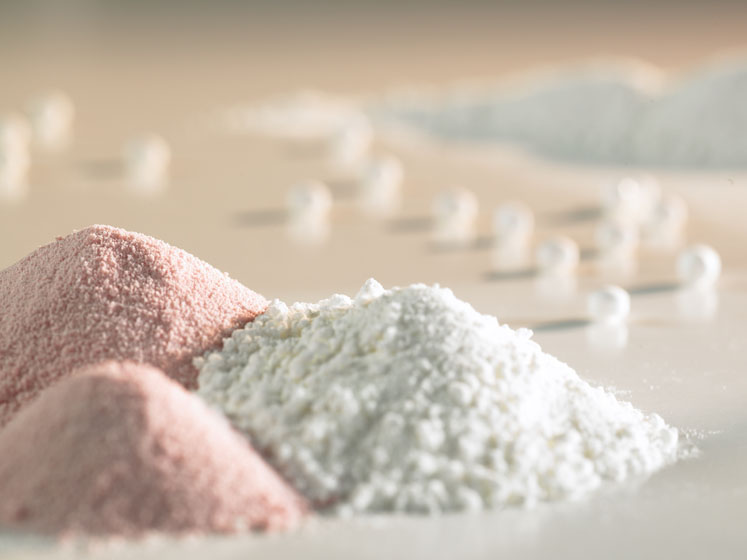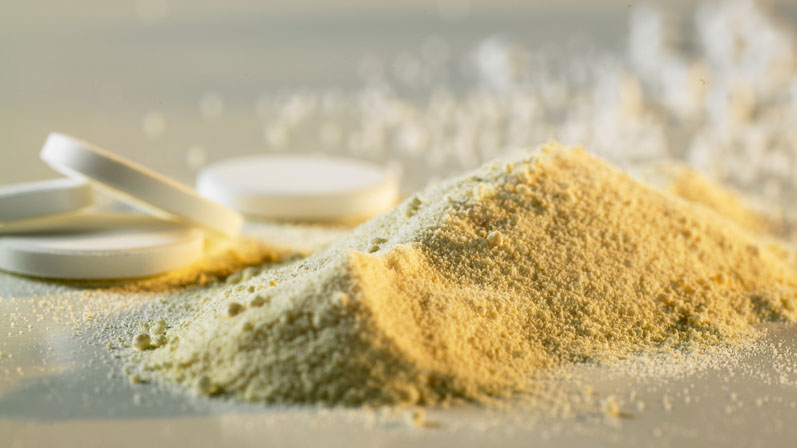A number of different granulation and compression technologies are available to pharmaceutical manufacturers, all of which have individual strengths and weaknesses depending on the specific application; however, to cite a popular online article: “The theory of granulation is often poorly understood and the selection of a particular machine and granulation method is frequently done on the basis of historical use and the operator’s own experience, rather than by using strict scientific or cost-benefit criteria.”1
Since that article was published, the basic techniques have changed dramatically and granulation for controlled release, extrusion, spheronisation, fluidisation techniques, spray drying, melt extrusion and oral dispersion have all been developed and adopted for use in modern pharmaceutical production.
Certainly, they offer many advantages compared with previously available processes, but has the industry really progressed in terms of how it selects the most appropriate granulation technique for a specific application? Dr Kevin Robinson spoke to GEA’s Dr Harald Stahl, Head of Innovation and Strategy, to dig a little deeper.
“In most companies,” Harald reiterates, “the main driver behind choosing a granulation technique is tradition; if you visit company A, it’s spray granulation; at company B, it’s high-shear granulation followed by fluid bed drying; the preferred technique at company C is roller compaction, etc. So, every organisation has its preferred way of doing things.”
And this is fine, notes Harald: “They all work, the appropriate equipment will be on-site and the requisite experience will be available. But, in recent years, several things have changed. The industry has been affected by a considerable amount of merger and acquisition activity; as such, it’s often the case that two companies that previously had a default policy of using a specific granulation technology have become a single entity and have had to reassess which process(es) to retain or adopt.”
“At the same time,” he continues, “the concept of continuous manufacturing is becoming increasingly popular, which wasn’t previously an option, and the nature of the drugs being developed and manufactured has also changed significantly. If you consider the new chemical entities that are coming through the pipeline, for example, we’re looking at processing much smaller volumes of higher value active pharmaceutical ingredients (APIs). All of these factors, albeit with a delay of several years, will cascade down into the realm of generic manufacturers and affect how they address the production issues of the future.”
Why granulate?
Explaining that very few people can actually assess whether a handful of granules are “good” or not means that the only way to test whether they’re fit-for-purpose is to run them through a production-scale tablet press to better understand their compression properties.
“And that’s really the point,” says Harald: “Essentially, the granule is an intermediate that must possess certain characteristics that make it usable in a high-speed tablet press. As an example, weight is a critical quality attribute, which means that excellent flowability is paramount.”
“However, no compression machine is equipped with an army of elves that measures out the exact number of granules required to produce a tablet of a given weight. The principle is that you have a certain volume, formed as a result of the diameter of the die and the depth down to the lower punch."
"This volume needs to be filled, homogenously, even at a rate of a million tablets an hour … and the faster you run the press, the less time you have to move the granules into the dies. So, you need material that has the required flow properties to be able to operate at maximum capacity. Otherwise, you will experience unacceptable weight variations and have to run the press at a lower speed.”

“Another key issue is content variability,” notes Harald, adding: “In a traditional batch operation, for example, you have several hundred kilos of material sitting above a tablet press. What with vacuum conveying or multi-floor layouts (which sometimes incorporate a drop of several metres), there is a significant risk of segregation."
"To minimise this, as opposed to simply working with a physical mixture of all the ingredients, you granulate to “freeze” the composition of the entire blend. In a nutshell, granules flow better and offer less risk of segregation.”
In previously established production lines, it was often necessary to make billions of tablets a year (Aspirin, Tylenol® and Panadol® are manufactured at annual volumes of more than 10 billion).
Now, however, the modern-day blockbusters comprise more expensive active ingredients and are frequently produced at much smaller volumes, particularly as a result of the growth of drugs for the treatment of orphan diseases. The upshot is that there is now a more economical way to reach production targets.
A new approach
“With large volume production,” observes Harald, “you would typically try to obtain your raw materials — especially excipients — as cost-effectively as possible, without necessarily paying too much attention to the physical form. Needle-shaped crystals and/or a wide particle distribution, etc. could be tolerated because the resulting mixture was combined with a binder and put into a high shear granulator. The process dynamics and mechanical energy produced during operation more often than not converted the powders into something that was good enough to feed a tablet press.”
“With large equipment such as a high shear granulator, fluid bed dryer, mill and so forth, the available capacities are enormous; but, at the same time, it’s the most economical way to mass produce oral solid dosage forms because you can use cheaper materials at scale."
"However, with the ongoing US FDA-supported implementation of robust and reliable continuous manufacturing (CM) solutions, and the increasing prevalence of orphan disease designated products, the situation has changed.”2
He continues: “Decreasing volume requirements are rapidly becoming the norm. An additional driver is the possibility — temptation even — of using direct compression to further improve and accelerate tablet development timelines as well as production. You simply take the ingredients, make a blend and compress it.” The perennial problem during batch manufacturing was the risk of segregation.
“With a continuous process, operators are increasingly realising that the major drawback of direct compression can be eliminated. It’s inherently possible to employ individual loss-in-weight (LiW) feeders for each ingredient and blend them inline in one or two stages — just prior to reaching the tablet press — removing the downtime between unit operations and drastically reducing the risk of segregation,” he adds.

“The perceived downside is that, to make the process work, you need more expensive raw materials; for CM applications, they need to be consistent enough and be of adequate quality to successfully pass through LiW feeders at a constant rate, without fluctuations caused by changes in physical appearance.”
“Tighter specifications must be met, but this is manageable because, for orphan drugs for instance, smaller amounts are required. Although it may seem to be counterintuitive, it is more cost-efficient to spend more on higher quality raw materials and avoid the complexities (and hassle) of integrating a wet granulation stage.”
In conclusion, this route to market is also faster because, during development, there are only two separate unit operations — blending and compression — to optimise. And, furthermore, the process generally involves less API and more easily accommodates the concept of operational excellence.
Conclusion
It’s worth restating, assures Harald, that granulation is the most important unit operation when manufacturing oral solid dosage forms. Citing another article, he explains that when compression problems occur, it’s all too easy — and common — to focus on the press.
Yet, the root cause of most tableting issues is not the press, it’s a consequence of upstream processing or a formulation error.3
Poorly granulated materials will not compress well and most fine pharmaceutical compounds require granulation to improve their flowability and processing properties prior to tableting. In closing, he advised that critical decisions need to made early on during development.
“This is when collaboration is key to ensuring that when a formulation reaches commercial-stage production, industrial-scale machines are actually capable of reaching the output values that they’ve been designed to achieve, problem free. Poor mixing, granulating and drying will lead to issues with tableting that cannot be rectified by adjusting the press.”
References
- www.gea.com/en/stories/comparing-granulation-techniques.jsp.
- www.in-pharmatechnologist.com/Article/2015/05/01/FDA-calls-on-manufacturers-to-begin-switch-from-batch-to-continuous-production.
- www.manufacturingchemist.com/news/article_page/A_grandmasters_approach_to_successful_tableting/147427.

